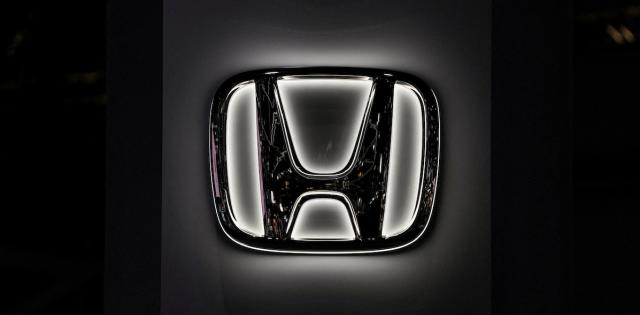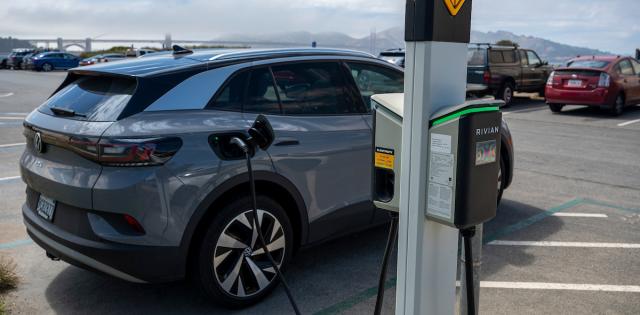The article below is sourced from Bloomberg Wire Service. The views and opinions expressed in this story are those of the Bloomberg Wire Service and do not necessarily reflect the official policy or position of NADA.
Mary Barra’s ambitious plan to double General Motors Co.’s revenue to $280 billion by the end of the decade has a relatively simple premise at its heart: Turn the legacy automaker into more of a tech company. Barra, the chief executive officer of one of the biggest carmakers in the US, is learning just how hard that pivot really is.
This week, the founder and CEO of Cruise, GM’s autonomous-vehicle company, resigned after a series of high-profile accidents and missteps. It was a remarkable setback for a company that just two years ago was projected to bring in $50 billion in revenue by 2030, according to an investor presentation. Now, Barra is pulling back on growth plans for the unit to make sure the cars are safe — and achieving that milestone on time is tough to predict, a person familiar with company plans said.
Barra has staked her leadership at the legacy automaker on a multibillion-dollar plan to grow GM after decades of downsizing. Key to that are investments in technological advancements, mainly self-driving cars and electric vehicles. To fund her vision, she closed down underperforming overseas business units, leaving markets in Europe and Asia to the likes of Toyota and Volkswagen, while pouring money into the potential vehicles of the future.
Analysts applauded Barra’s plan, but developing new technologies is not GM’s strength. “There’s a big difference between strategy and execution,” said Sam Abuelsamid, research analyst at Guidehouse Insights. “They just have not been able to build batteries and they took their eye off the ball with Cruise.”
Jim Cain, a spokeperson for GM said in an email, “we haven’t changed our long-term targets but our immediate focus is on the 2023-2025 timeframe when we will be scaling EV production and advancing our other growth initiatives.” A spokesperson for Cruise declined to comment.
Growth Over Safety
Amid regulatory problems and safety issues, Cruise has paused its driverless taxi operations while an outside law firm and a technology consultant review the business. Insiders say Cruise CEO Kyle Vogt, who Barra appointed after firing its previous leader Dan Ammann, pushed for growth too fast. Vogt didn’t respond to requests for comment.
In June of last year, two incidents in Cruise’s test market, San Francisco, had some internal managers questioning whether the robotaxis should expand into more cities. First, a Toyota Prius, which according to police reports was speeding, crashed into a Cruise car. Then, a dozen Cruise vehicles all stopped and blocked an intersection, which led to a recall of the cars for a software upgrade.
Undeterred, Vogt the next month announced Cruise would enter Phoenix and Austin. At the time, Vogt said in an interview with Bloomberg News that the technology was safe and the only barrier was how quickly GM could build the cars.
“The technology works, there are people using it,” Vogt said in June 2022. “We’re putting cars in the cities. Now we just need to build more of them.”
Vogt told executives internally that Cruise had to establish a customer base in metro markets before Google’s Waymo self-driving unit, much like Uber did in its race against Lyft to dominate ride-sharing.
To meet that goal, Vogt started softening internal safety review metrics, according to two people familiar with the situation. Whenever the company was going to expand hours of operation, the number of vehicles driving or its geography, Cruise conducted what it called Launch Readiness Reviews. A dozen different metrics had to be “green” to get the go ahead, but Vogt started bending the rules, the people said.
Cruise cars would occasionally run through caution tape around construction sites or safety zones. Vogt decided that was tolerable if it didn’t happen often, the people said. Past employees say Vogt was known for overriding opposing views from subordinates.
Vogt also wanted GM to start building more of the Cruise Origin, a six passenger autonomous shuttle with no steering wheel or control pedals, before the National Highway Traffic Safety Administration approved it. Cruise hoped to have 2,500 of them this year and 60,000 in 2026, one of the people said. GM would only make a few test models until NHTSA approved the vehicles for the roads.
A year after the 2022 incidents, The California Public Utilities Commission voted to allow Cruise to charge fares at all hours. In October, a Cruise vehicle seriously injured a pedestrian. Later that month, Cruise paused operations. At its peak, it had 400 robotaxis on the road in San Francisco.
Previous Cruise CEO Ammann had taken a more cautious approach, having delayed the company’s original goal to provide robotaxi services by the end of 2019. Barra fired him because of disagreements over strategy and whether to take the company public. Ammann didn’t immediately respond to request for comment.
Some Cruise staffers circulated an image of an orange T-shirt this week that says “Dan Was Right” with a picture of a sheep, since Ammann hails from wool producing New Zealand, one of the people said.
While GM still sees value in the robotaxi business, the company plans to move much more slowly. Cruise will make sure the technology is safe and that it has proper controls in place to monitor the vehicles, a person familiar with company plans said.
Electric Dreams
Barra’s electric ambitions are even more pivotal to doubling revenue. In February, the CEO said 2023 would be GM’s “breakout year” for electric vehicles. But the company has only sold some thousands of its newest plug-in models, and Barra will miss her EV revenue target for this year, according to a person familiar with GM’s plans.
The automaker is on pace to grow revenue by 12% this year to $175 billion despite a six-week strike, but that’s from the strength of its legacy business. By now, GM said it would be selling 20 different EV models in markets around the globe, raking in $10 billion in new revenue from those alone. It’s only selling 15 in US and China, so far.
Production snags have kept potential customers waiting. GM’s battery cell plant in Ohio is humming, but the battery pack plant in Michigan has had trouble with the automation that was supposed to assemble packs and workers are doing it by hand, GM said to investors.
GM will press ahead with its battery ambitions. President Joe Biden’s incentives for EV makers and global regulations will help make it a reality. But long-term investment in self-driving cars will have to earn their keep, says Abuelsamid.
“Mary may retire in the next couple of years,” he said. “The next CEO may not want to spend billions a year on autonomy.”
For more stories like this, bookmark www.NADAheadlines.org as a favorite in the browser of your choice and subscribe to our newsletter here:












